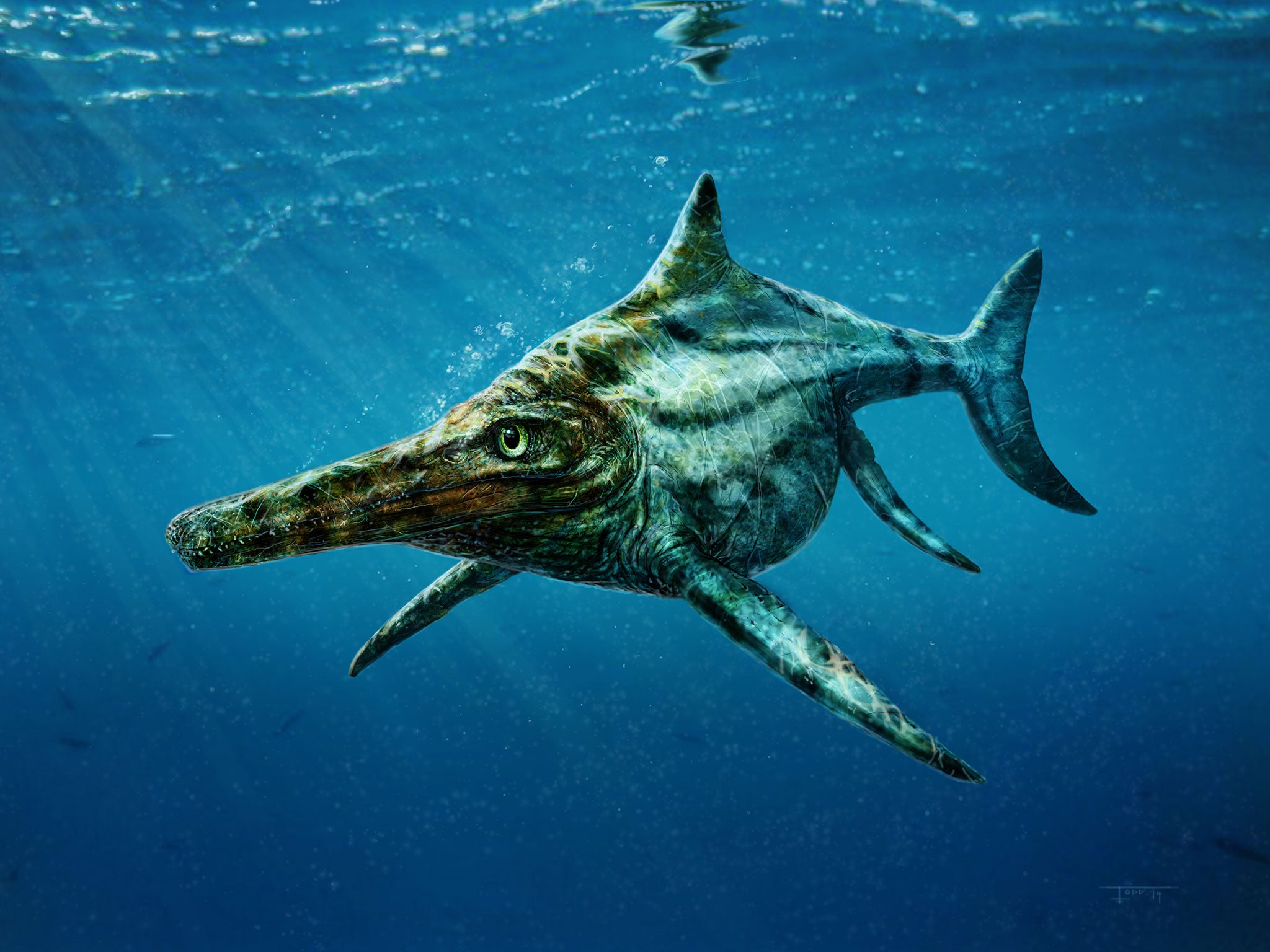First remains of new 'shark-like reptile' found on the Isle of Skye
During the time of the dinosaurs, the waters of Scotland 'were prowled by big reptiles the size of motor boats'

Resembling a fierce ancestor of the Loch Ness monster, the first fossil of a shark-like reptile that lived at the same time as the dinosaurs has been found in Scotland.
The fossil of the top-ocean predator that lived 170 million years ago was first discovered lying on a beach on the Isle of Skye in 1959 by an amateur collector – but it has only now been recognised as a new species of ichthyosaur, an extinct group of marine reptiles that dominated the oceans of the Jurassic Period.
Scientists have named it Dearcmhara shawcrossi, after Brian Shawcross, the amateur collector who donated the specimen to Glasgow’s Hunterian Museum, and the Gaelic word for marine lizard, dearcmhara – pronounced “jark vara”.
The fast-swimming reptile grew to be about 14 feet long from snout to tail and was armed with an array of sharp teeth. It lived in the warm, shallow seas around the coast of what is now Scotland and fed on fish and possibly smaller reptiles, said Steve Brusatte, a palaeontologist at the University of Edinburgh.
“During the time of the dinosaurs, the waters of Scotland were prowled by big reptiles the size of motor boats. Their fossils are very rare, and only now for the first time we’ve found a new species that was uniquely Scottish,” Dr Brusatte said.
“It looked particularly peculiar to us and when we compared it to other fossils it was clear that it was a different ichthyosaur to anything that we had been seen before. It’s not the most beautiful fossil in the world but we realised it was an unusual specimen.”
Though the fossil is incomplete and includes only four bones of the animal’s skeleton, the researchers identified unique features, such as a triangular bony projection on one of the bones of its forelimb for connecting muscles, that were not seen in other ichthyosaurs.
During the Jurassic Period, much of Skye was underwater but connected to the mainland. Britain was part of a large island positioned between the great land masses of Europe and North America.
Skye is one of the best places in the world for finding fossils of the creatures that lived during the middle of the Jurassic, between 160 million years and 170 million years ago, Dr Brusatte said. “It’s a real treasure because the fossils on Skye come from a time during the Jurassic when we don’t have fossils from the rest of the world. By pure, dumb luck, it gives us a window into this mysterious period of time.”
Join our commenting forum
Join thought-provoking conversations, follow other Independent readers and see their replies
Comments